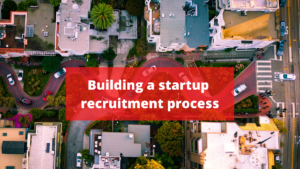- 4.08.2021
Onboarding plays an absolutely crucial role in a new hire’s success and happiness, and consequently on their productivity and fitting to the Team. A good onboarding experience is especially important for remote employees, since they don’t have as many opportunities to integrate themselves into the company’s workflow and to its culture, as well as to get to know their new colleagues both humanly and professionally.
How long should remote onboarding take?
The onboarding period can last from a couple of weeks to a couple of months, depending on the complexity of the new hire’s role, the size of the company and the size of the team the new hire will work in. On the other hand, especially in bigger companies, it is a very common practice to extend the onboarding process up to half a year, as it may improve employee-retention and help new hires feel like part of the team.
Onboarding is among the most influential factors when it comes to employee experience. Studies have shown that startups that have effective onboarding processes in place achieve 2.4 times more revenue growth and 1.8 times the profit margin compared to startups with poor onboarding strategies.
However, creating a great onboarding experience is not easy. Like many other processes in remote teams, onboarding requires a completely different approach compared to face-to-face situations. Without a physical work environment, you can use video chats and fun team meetings to get the new team member to feel welcome right away.
The new hire will receive an avalanche of new information in a short amount of time, so it is crucial to list out each step of the process and make sure it will not be overwhelming for them. You will also need to help them identify the best channels for asking questions and finding what they need (especially if they work in another time zone).
Another big challenge is building an emotional connection with the new team – when you aren’t in the same space, it’s very easy for a new employee to feel isolated. Creating a structure to encourage informal moments should also be a priority. It is also a very good practice to set up a few individual meetings between the new hire and those that will be the colleagues he will be working closely with, in which they will have to get to know each other by talking solely about non-work-related topics.
5 Tips for Onboarding a Remote Employee in a Startup
When you bring people on board a startup, it’s your responsibility as a Founder to make sure they have everything they need to be successful in their role. Here are some steps you can take to support new employees:
1. Create a two-week plan
Remote workers take longer to onboard. Creating a plan, setting up all the meetings (ideally, never more than 3 per day) with agendas and video links will reduce the stress new hires might have and ensure they are getting introduced to all the people, processes, and projects that will be part of their work.
2. Start off with a small project
Collaborate on developing a clear plan for the new hire’s first 30, 60, and 90 days so that you will both be aligned on the expectations for the role. Give them an exercise within the first couple of weeks that requires cross-team collaboration or knowledge discovery to introduce them to other team members, information about the company and regular digital gatherings within your remote culture.
3. Onboard in groups
Onboarding in groups is a great way to minimize the effort and redundancies of onboarding new hires and training them. It also creates a sense of community amongst your new hires. Crazy Egg, a SaaS startup that grew from 5 to 29 employees in the year 2018, uses this approach. They hired people in groups, and each group had “squad hosts” who create an environment for people to feel comfortable collaborating with each other.
4. Ask for feedback
If you’re not experienced in running a remote team, there’s a good chance you might experience some hiccups initially. That is perfectly fine. Ask each new remote employee to pay close attention to the process and tell you what worked and what didn’t. This will allow you to continuously improve the process for your new future hires.
5. Train your employees virtually
Make simple instructional videos for tasks that they need to master, hold one-on-one chats with them to walk them through more complicated tasks, and enlist other team members to help teach them things. While it is true that working remotely can be at times challenging, it is also true that technology allows an infinite amount of very nice ways to communicate, and it is important to implement this in your on-boarding process as well.
Read More About Startup Recruitment

Building a startup recruitment process
While recruiting tends to be one of the most important tasks of startup founders, most founders are not recruiters. While on the surface recruiting is

How to Work With an Agency
Generally speaking, some companies might not want to use a recruiting agency because they assume they would mainly provide candidates for either entry-level or temporary

How to Hire Foreign Remote Talent for Your Startup
The ongoing global pandemic has brought about a sudden realization that remote work can actually work. Consequently, startups seem to be increasingly open to hiring

Author of this post


